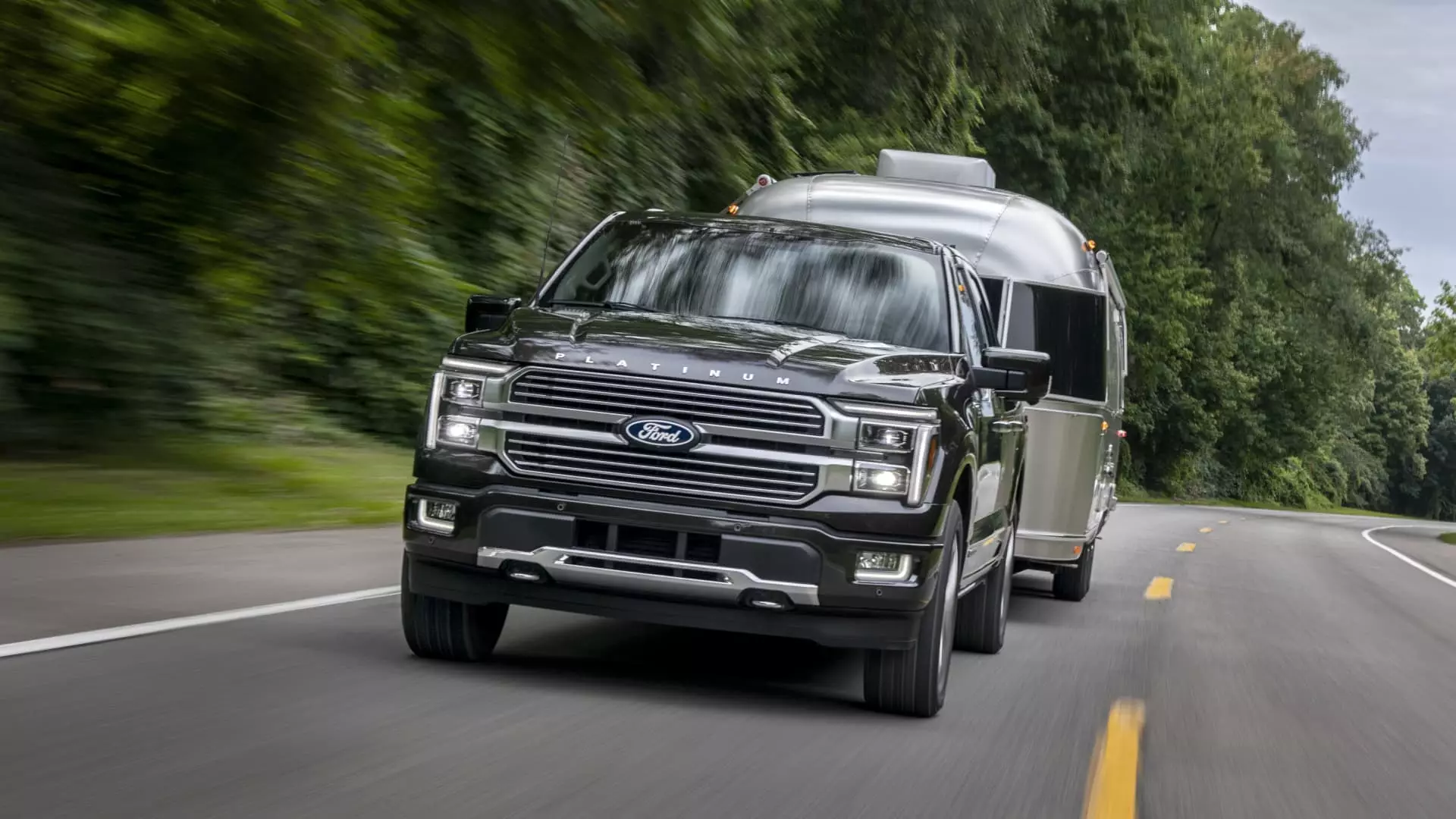Ford Motor is making bold moves to address the slower-than-expected sales of its all-electric vehicles. The company has announced its plans to double the production of a hybrid version of its popular F-150 pickup truck. Ford aims to increase sales of the V-6 hybrid model to approximately 20% during the 2024 model year in the United States. While specific production figures have not been released, this ambitious target is likely to result in tens of thousands more hybrid vehicles.
Challenges Ahead
However, achieving this production target may not be an easy task. With the looming potential strike by the United Auto Workers (UAW), Ford and its crosstown rivals face the possibility of factory shutdowns. The UAW has set a deadline for separate deals with Ford, General Motors, and Stellantis by Thursday to avoid work stoppages. Consequently, the future of Ford’s hybrid production plans remains uncertain until agreement is reached with the UAW.
The decision to double hybrid production aligns with Ford CEO Jim Farley’s recent announcement that the company will quadruple its production of gas-electric hybrids. However, it is important to note that Ford will be increasing EV production at a slower pace than previously anticipated. Farley emphasized that Ford is carefully balancing growth, profitability, and returns. Despite the focus on EVs, the company believes that demand for internal combustion engines and hybrid vehicles will remain strong, providing a longer and more lucrative window of growth than expected.
Ford’s president of the traditional “Blue” business unit, Kumar Galhotra, expressed optimism about the F-150’s potential to become the best-selling hybrid in North America. Currently, Toyota Motor’s RAV4 and Prius hold this title. This renewed focus on hybrid vehicles could secure engine manufacturing jobs for Ford and its unionized workers for the foreseeable future.
The Role of Hybrids
Hybrid vehicles, such as the F-150 hybrid, blend internal combustion engines with small batteries to enhance performance and fuel efficiency. They differ from plug-in hybrid electric vehicles, which require recharging like all-electric vehicles to take full advantage of electrification benefits. Ford’s hybrid strategy aims to offer customers a transition to full electric vehicles while acknowledging that electrification may not be the optimal solution for everyone at this stage.
A History of Transformation
Ford has a reputation for making strategic engine lineup changes to improve fuel economy and performance. The introduction of the twin-turbocharged EcoBoost engines for the F-150 in 2011 faced skepticism but quickly became a popular choice. Today, EcoBoost powers the majority of F-150 vehicles sold. John Emmert, Ford truck general manager, emphasized the company’s commitment to catering to a wide range of customer needs, mentioning that some customers still require V-8 engines for towing and range, while others in rural areas may find the all-electric F-150 Lightning less suitable.
The exact pricing for the 2024 F-150 hybrid with a 3.5-liter V-6 “PowerBoost” engine has not been disclosed. However, on current models, this hybrid option comes at a minimum cost of $2,500 extra and is standard on the high-end F-150 Limited model, which starts at approximately $83,000.
The F-150 hybrid will offer an impressive 430 horsepower and 570 lb.-ft. of torque. Ford claims that, apart from the Raptor and Raptor R V-8 performance models, the hybrid will deliver the highest power among the F-Series pickups. Full specifications are yet to be revealed, but the 2024 F-150 will not only showcase updates to its exterior and interior but also a newly designed tailgate that provides multiple accessibility options for the truck bed.
Ford’s decision to double the production of the hybrid F-150 signifies a significant shift in strategy to address the challenges faced by its all-electric vehicle sales. By focusing on hybrid technology, Ford aims to cater to a broader range of customers, offering them a stepping stone towards full electrification. This move also helps to secure engine manufacturing jobs for Ford workers while positioning the F-150 hybrid as a potential best-seller in the North American market. However, the ongoing negotiations with the UAW and the uncertainty surrounding the production capacity during a potential strike pose potential risks to Ford’s plans. Nonetheless, with its history of successful transformations and a commitment to meeting customer needs, Ford remains determined to shape the future of the automotive industry.


Leave a Reply